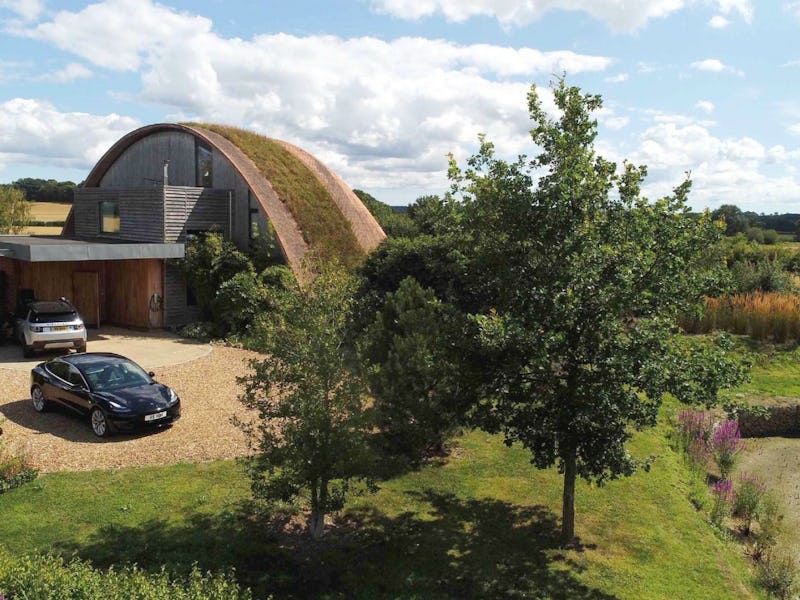Tesla Powerwall: Video shows fairytale-like home powered by solar
An architect has spent the past decade tweaking his eco-friendly home of the future — and now he’s handing over more control to Tesla.

Richard Hawkes’ house, nestled in the Kent countryside in England, is playing host to a new era of Tesla technology.
The architect’s eco-friendly home, which featured in a 2009 episode of British homebuilding show Grand Designs, is one of 65,000 buildings certified worldwide as a Passivhaus, meaning it uses minimal energy for heating and cooling.
In March 2020, he signed up for the Tesla Energy Plan. It’s an energy tariff introduced by Tesla retail partner Octopus Energy in November 2019 and launched to the general public in October 2020.
It may be a useful way to reduce energy bills for eco-friendly homes, but it also shows how Tesla is moving beyond just selling energy products to consumers.
Want to find out more about Hawkes’ cost savings, how it worked as part of his eco-home of the future, and what the plan means for Tesla’s future ambitions? Read the full interview, only in MUSK READS+.
The Tesla Energy Plan is aimed at people that own solar panels and a Tesla Powerwall battery. The battery stores solar energy so it can power the house even when the Sun is not shining.
With the plan, customers agree to hand over control of their home’s Powerwall. The battery then sends electricity to the grid when it’s needed most and takes electricity from the grid when it’s cheapest. Other factors like personal energy usage patterns and weather forecasts are used to decide when to send energy.
It also claims to offer savings of up to 75 percent compared to the UK’s “big six” energy providers. So far, Hawkes is satisfied.
“The Tesla plan has been great,” Hawkes tells Inverse.
Hawkes’ house has two solar arrays. There’s a 4.5-kilowatt array installed by The Little Green Energy Company, and a 3.5-kilowatt PVT panel. These PVT panels combine electricity-generating photovoltaic panels with heat-generating thermal panels into one module.
Although Hawkes regularly tweaks his home to make it more energy-efficient, he’s happy to give up control of the Powerwall.
“I kind of got a bit fed up with having my own control system,” Hawkes says. “Handing all the control over to Octopus and knowing that when I plug my car in, when I turn on the oven, whatever, they're managing it all. If it happens to be peak time, then they've got it so that my house will be using it from the battery at that time to keep me off the grid.”
But the plan is more than just a small benefit for Tesla users. With CEO Elon Musk aiming to dramatically expand the size of Tesla’s energy business, the plan is part of the firm’s quiet move toward building invisible “virtual power plants.”
TO READ THE FULL INTERVIEW, SUBSCRIBE TO MUSK READS+.
Here is what you will gain from subscribing to MUSK READS+:
- Three emails per week, enabling fans to go deeper into the week’s news.
- Original interviews and reporting, longform analysis, previews and recaps of major events, including earnings calls and more.
- Community-focused extras like responses to reader mail, an upcoming event calendar, and notable anniversaries.
- An archive of previous subscriber-only content, so you can easily read back over what you might have missed.
- Promotional deals and offers.
- Supporting original, independent journalism.
MUSK READS+ is a fully independent operation. We are not Elon Musk, nor are we employed by him. Our job is to report the events we find newsworthy, giving you the inside look at the worlds of space rockets, electric cars, clean energy, and more. It means first-hand accounts of a SpaceX rocket launch, Tesla insights from third-party analysts, and more.
If you want to support us in our mission, and receive original interviews and analysis, consider contributing with a subscription.
This article was originally published on